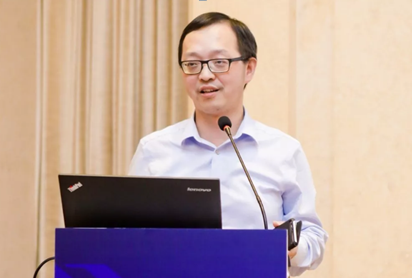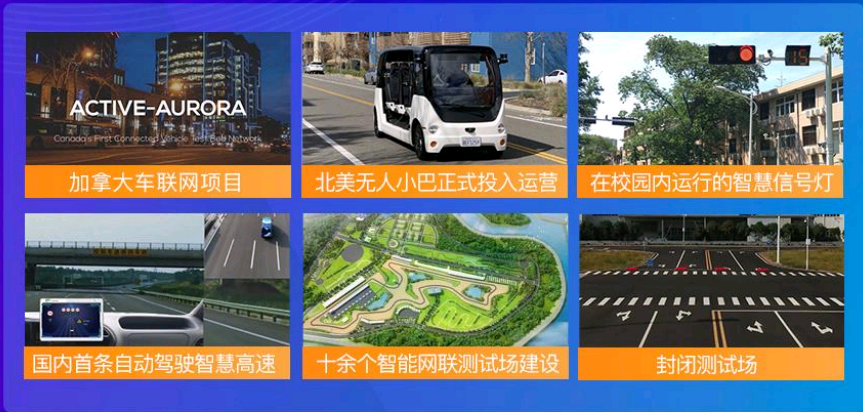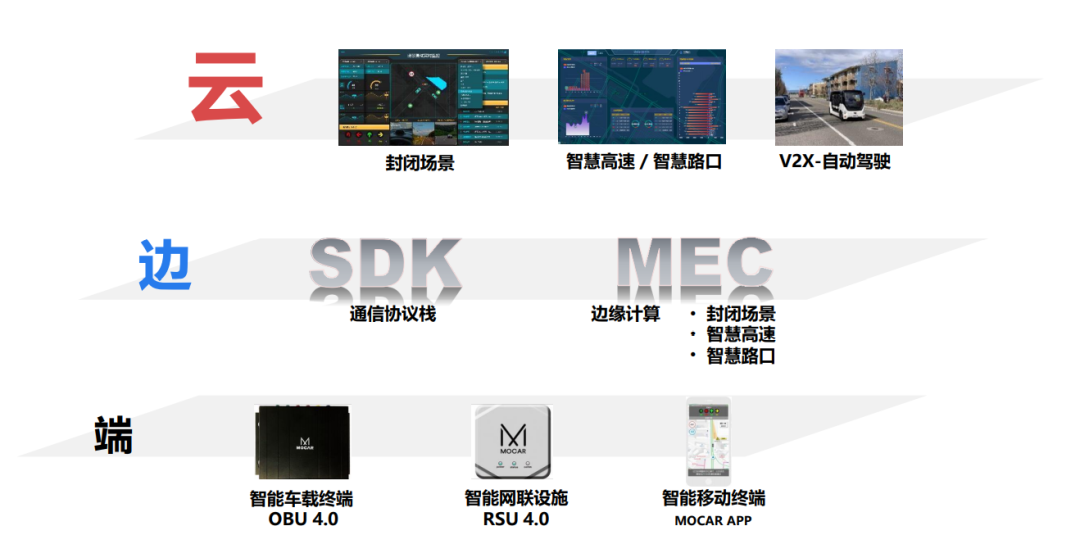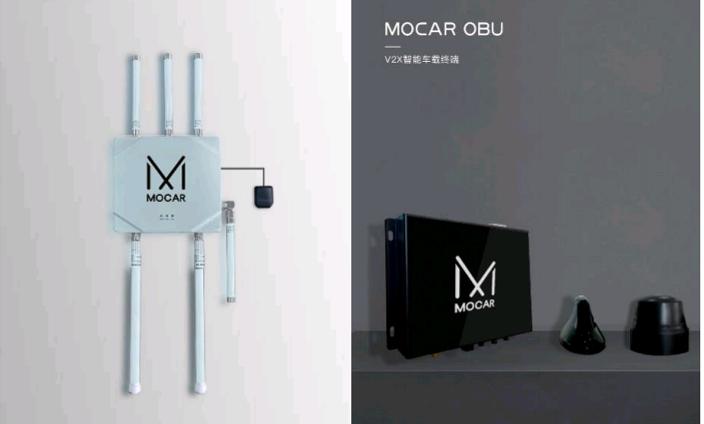Author: Empowering Manufacturing with Technology
On March 25-26, the “First Yan Knows Intelligent Vehicle Annual Conference” was grandly held in Shanghai, where 36 heavyweight guests provided suggestions and discussed difficulties and issues related to the evolution of intelligent vehicles, intelligent driving sensors, high-precision maps and positioning, in-vehicle communication and intelligent transportation, and autonomous driving safety.

During the conference, Mr. Qiu Zhijun, Founder, Chairman and CEO of Huali Zhixing, was interviewed by journalists and had in-depth communication regarding collaborative vehicle-road and intelligent transportation, the development of V2X, and solutions for commercial mass production.
Core Technology Boosts Smart Transportation
Before 2014, Qiu Zhijun was still a professor at a university in Canada. He foresaw the wave of vehicle intelligence and electrification and felt that he should transform his research results into commercial expertise. As a result, he founded Huali Zhixing in Canada. Later, due to China becoming the world’s largest automobile market, the domestic headquarters of Huali Zhixing was established in Wuhan in July 2017, and the second headquarters was established in Suzhou the following year, focusing on the development of the Yangtze River Delta.

Qiu Zhijun has long been engaged in V2X intelligent transportation, traffic control and optimization, traffic information perception, and monitoring research, and has accumulated rich experience in traffic information processing, traffic optimization and control of large-scale road networks in cities, and the supervision and regulation of intelligent public transportation. Under his leadership, Huali Zhixing has become a leading provider of V2X vehicle networking and intelligent transportation core equipment and solutions in the emerging industry in recent years.
The company is committed to establishing an open, distributed, and self-organizing V2X perception network for all things in the vehicle network, making full use of digital technologies such as cloud computing, IoT, AI, and 5G to achieve efficient collaboration among people, vehicles, roads, and clouds, making mobile travel more intelligent, safe, and enjoyable. The company’s vehicle networking products have been applied in many enterprises in China, the United States, Canada and other countries, and have been promoted in more than 20 cities in these countries, supporting more than 30 intelligent connected vehicles, and is currently conducting front-end mass production research with multiple OEMs.
 Qiuzhijun said, “We have internationally leading core technologies in car networking wireless communication, protocol stack, software development kit, information security middleware, vehicle driving behavior modeling, traffic intelligence algorithm, and so on. After more than ten years of research and development in North America and gradually achieving localized products in China, we have constructed a car networking intelligent system, which is conducive to realizing intelligent travel services.”
Qiuzhijun said, “We have internationally leading core technologies in car networking wireless communication, protocol stack, software development kit, information security middleware, vehicle driving behavior modeling, traffic intelligence algorithm, and so on. After more than ten years of research and development in North America and gradually achieving localized products in China, we have constructed a car networking intelligent system, which is conducive to realizing intelligent travel services.”
It is reported that Huali Zhihang’s core technologies include “intelligent terminal” + “intelligent algorithm” + “intelligent transportation cloud platform”, covering a complete product line of car networking data acquisition, analysis, processing, and distribution, realizing the industry-leading car-road coordination system and intelligent networked cloud platform with holographic perception, efficient computing processing, and high-speed information transmission, forming an end-to-end, edge-to-end management system and solution based on Intersection-level, road section-level, and regional-level MEC (Multi-Access Edge Computing) construction.

National strategy is powerful, and opportunity is right in front of us.
With the deep integration of digital technology and automobile industry, intelligent networked vehicles are gradually becoming a strategic high ground for the development of the global automobile industry. Last year, China’s C-V2X was made an international standard, indicating that China is well prepared in this regard.
So, what is the difference between China’s car networking development and foreign countries? Qiuzhijun said that “North America and China have different understandings and practices about intelligent transportation. Car networking is greatly influenced by policies and standards, and the government plays a more important role.” North America puts more emphasis on the participation of the industry, so various alliances and associations participate deeply in the design and planning, and the government plays more of an auxiliary role, pushing the industry’s development from the legal and policy aspects. However, due to institutional reasons, the decision-making process is much longer when the government makes some investment.
China has defined intelligent networked vehicles as a clear strategic development direction. Multiple ministries are vigorously promoting the development of relevant industries. For example, the Ministry of Industry and Information Technology is establishing a standard system and specifying the V2X spectrum; the Ministry of Public Security has issued the Management Specifications for Intelligent Networked Car Road Testing; and the Ministry of Transport is advancing road transport collaboration.
He believes that the Chinese government is good at starting from infrastructure investment. Especially in the past two or three years, China has emphasized technological innovation, controllable technology, and intellectual property rights. Therefore, China’s importance to car-road collaboration sub-sector is extraordinary, especially with 5G plus new infrastructure and Artificial Intelligence (AI), both of which are important strategic directions for the country’s future. The Chinese government takes the initiative in terms of policies and infrastructure investment, focusing more on long-term strategic investment.
Targeting two differentiated markets
For Huali Zhihang, passenger cars and commercial vehicles are two different markets, one is the front-loading market, and the other is the back-loading market. Qiuzhijun said, “Passenger cars are our focus for front-loading, and we look forward to the stock market of commercial vehicles for rear-loading. In 2021, we are expected to have tens of thousands of landed rear-loading units, and we are currently working on delivering them to customers.”So what are the challenges facing the front-loading mass production market, and how are they being addressed? He said that there are two challenges for front-loading mass production. The first challenge is that the industry believes that front-loading is definitely a trend, but everyone is also waiting for the popularization of roadside terminals. If the popularity is not high, there will be delays in the promotion of front-loading, which is related to the differences in the understanding of V2X by the OEMs. The second challenge is that what people value is true mass production, and the automotive industry’s production line and supply chain are very long. At present, some government-led test sites and demonstration areas are mainly for technical testing, rather than true mass production, which may lead to some misunderstandings about the true commercial value of V2X. Both of these challenges involve the understanding of the nature of the car-road co-treatment industry’s market.
Any business application is purpose-driven, so where is the profit point of the car-road co-treatment? Who should maintain the system when the number of vehicles increases in the future? Qiu Zhijun believes that digital traffic operators will definitely emerge in the future. For OEMs, if the value of a car is mainly before it leaves the factory, as it was for the past 20 years in the automotive industry, it is still a lukewarm market. Intelligent cars and electric cars are the development trend, especially high-level assisted driving functions with automatic driving as the selling point are gradually accepted by consumers, making more and more people willing to pay for electric and intelligent (or service) fees, which has become a trend of commercial development.
Which Comes First, the Car or the Road?
Providing intelligent travel services and experiences for users and creating smart cars and smart roads are the two important aspects of car-road co-treatment. So, which comes first, the car or the road? Qiu Zhijun said: “As mentioned above, China has both policies and standards, which have overall advantages. Therefore, China’s progress in roadside digitization and intelligence is relatively fast, followed by vehicle digitization and intelligence. Because of these conditions, there is a large influx of funds into the electric vehicle industry now, and recently, Xiaomi has also joined the ranks of car manufacturers, demonstrating its heat is extraordinary.”
He said that the starting point of the road is to have a certain level of regional and large-scale roadside intelligence. Currently, there are already three or four dozen demonstration areas and leading cities led by the Ministry of Transport, the Ministry of Industry and Information Technology, and the Ministry of Housing and Urban-Rural Development. China’s V2X industry is pushing forward comparatively quickly, which is highly related to road construction. In the future, it is important to do well in vehicle-end and increase the popularity of front-loading. Ultimately, it still has to return to the essence of cars and transportation—to improve efficiency on the premise of safety and serve the majority of users. Therefore, pre-installation may be free in the future, and consumers can pay by function. Installed on the car, it can also be unused.
 Regarding the implementation path of the Internet of Vehicles, Qiu Zhijun said, “One path is based on roadside intelligence, with pilot tests in demonstration areas and leading areas of commercial operations, and continuous promotion along this route, with substantial scale-up every year. Another path is based on intelligent vehicles, especially in the first half of this year, where several technology startups have invested billions of dollars in L4 autonomous driving technology. I believe that an intelligent path alone is not enough, and intelligent vehicles alone are not enough. Therefore, these two paths need to proceed in parallel and promote each other. This is a spiral iterative process.”
Regarding the implementation path of the Internet of Vehicles, Qiu Zhijun said, “One path is based on roadside intelligence, with pilot tests in demonstration areas and leading areas of commercial operations, and continuous promotion along this route, with substantial scale-up every year. Another path is based on intelligent vehicles, especially in the first half of this year, where several technology startups have invested billions of dollars in L4 autonomous driving technology. I believe that an intelligent path alone is not enough, and intelligent vehicles alone are not enough. Therefore, these two paths need to proceed in parallel and promote each other. This is a spiral iterative process.”
Qiu Zhijun told Yan Zhi that “we are now basically in the R&D investment stage. Although we haven’t truly achieved mass production yet, we firmly believe that the connection between cars and between the road and the car can bring real value to drivers. We hope that in the future, just as apps are pre-installed on smartphones, Huai Li Zhi Xing’s software can be pre-installed on cars at the factory. We are willing to cooperate with industry partners to seize opportunities and create this value, and to uncover the future commercial gold mine.”
From ADAS to Autonomous Driving
One goal of vehicle-to-road cooperation is to facilitate the achievement of autonomous driving by providing high-speed road and environmental information to solve the problems of complex road conditions and extreme weather under single-car intelligent perception, making autonomous vehicles safer.
The industry generally believes that there are two paths to achieve autonomous driving: one is based on single-car intelligence; the other is V2X vehicle-road cooperation, which uses roadside intelligent perception devices to interact with intelligent vehicles to achieve network-enabled autonomous driving.
So what is the transition from ADAS to autonomous driving, and what role can V2X play in it? Qiu Zhijun believes that “the evolution from ADAS to autonomous driving is essentially a driver’s increasing demands for safety, which need to evolve from low-level assistance to high-level intelligent assistance, and then to complete intelligence. The combination of V2X and ADAS and autonomous driving can enhance the safety of autonomous driving.” Categorical statistics show that ADAS can reduce 30%-40% of accidents, V2V in V2X can reduce the probability of another 30%-40% of accidents, and the combination of ADAS and V2V can reduce another 20% of accidents. Therefore, this is an iterative process, and the stronger the external perception, the lower the probability of driving accidents.
A Repeat of Apple and Android in the Car Industry
V2X roadside products can play an important role in ADAS and autonomous driving, but they also require support from onboard terminals. Some automakers, such as Tesla, are based on single-car intelligence and rarely mention intelligent traffic and vehicle-road cooperation. On the other hand, new automakers in China, such as Nio, XPeng, and Li Auto, all have high-precision maps and vehicle-road cooperation functions. It seems that new carmakers are taking a different approach.# An English Translation of the Provided Markdown Text
Qiuzhijun believes that, like Apple and Android, Tesla is a relatively closed system while other technology companies are more like Android and place greater emphasis on the ecosystem and partnerships. In fact, the automotive industry is replicating a business model similar to that of the smartphone industry, and now there is a Xiaomi.
As for the issue of frequent accidents involving Tesla, he said that Tesla started calling its technology “autopilot,” but it is essentially an advanced driver assistance system. Now, there are some gray areas in both policy and legal aspects, including the recently raised issue of Tesla data security. Some users treat the advanced driver assistance system as autonomous Level 4 driving, and in general overestimate its functionality. “I think this is due to a mismatch between user behavior and Tesla’s functionality. Overall, accidents still involve the driver’s participation, and it is mostly an issue of interaction between people and machines. I believe Tesla’s exploration of driving safety is positive,” he said.
Three Innovations Driving Cooperative Vehicle-Road Integration
How will the future of smart transportation develop? Qiuzhijun emphasized that technological innovation combined with business innovation, as well as social innovation, is necessary to drive the vehicle-road cooperation industry forward. Technological innovation is relatively straightforward and can rely on talented professionals; business innovation requires finding value realization models in inner and outer circles; social innovation requires 90s, 00s, and even future generations to try new things, create social consumption heat, and promote vehicle-road cooperation and other new technologies. “China is undoubtedly a fertile land of technological innovation, just like the Internet,” he said.
The automotive industry is undergoing a tremendous transformation and requires deep integration from ordinary consumers. Over the past decade or so, cars, which were once a symbol of identity for ordinary people, have gradually transitioned to the status of vehicles for transportation. With the emergence of commercial models like Didi, people’s daily transportation choices have become highly diversified. Today, with the increasingly pragmatic consumption mentality of young people, just as we rarely use pens to write or read paper books and newspapers, people will be freed from the tense and anxious act of driving with the convenience brought by technology. Cars can truly become a means of transportation that provides us with real safety and happiness.
This article is a translation by ChatGPT of a Chinese report from 42HOW. If you have any questions about it, please email bd@42how.com.